How To Understand the Provinces, Prefectures, Counties and Towns of China (Part 1)
A practical and straightforward guide to China's administrative tiers (with examples)
”Autonomous prefecture”, “County-level city”, “Township”, sub-district…”
If you’ve been in China a while, or consume China content, you’ll have seen these words and similar oddities appear before, like snippets of some secret language. Certainly I use these words all the time in my writing, and I have generally assumed my audience knows enough about China to follow the jargon. Recently, I realized it would be best to write an explainer essay about this, because confusion keeps arising and I need a clear resource to which I can point when that happens.
If you’re just here for the travel stories, you’re totally fine to skip this explainer. Don’t worry, I’ll get back to the good stuff soon enough. If you’ve been confused by some of these terms in the past though, this post might be useful for you.
This will be a 2-part series. This is Part 1 - Understanding China’s Administrative Tiers in Broad Strokes for Normal People
There will be another part in the future: Part 2 - Understanding China’s Administrative Tiers For Nerds and Pedants (including all the weird exceptions and unconventional arrangements)
2024 Update: Here’s Part 2.
I have to split it like this, because 1) Most people only want or need the broad strokes, but 2) I am myself a nerd and a pedant, and I know people will definitely offer their corrections if I don’t ALSO get into the weeds.
Chapter 1: Province-Level
Let's start at the top. The highest administrative level in China is "Province-Level".
This includes:
Regular Provinces like Jiangsu or Guangdong
Directly-governed Municipalities like Beijing or Chongqing
Autonomous Regions like Inner Mongolia or Xinjiang, and
Special Administrative Regions like Macau or Hong Kong.
Here’s a handy map from Wikipedia: (I will use a lot of Wikipedia maps today)
In the map above, Provinces are in pink. The 5 Autonomous Regions (associated with certain ethnic groups) are in yellow. The 4 Direct-governed Municipalities are in green. Autonomous Regions have a few differences that distinguish them from regular Provinces in terms of governance, but these are fairly minor in practice. Provinces and Autonomous Regions have a capital city, while Direct-governed Municipalities do not (they are themselves cities).
This is the part where I point out that the Direct-governed Municipality of Chongqing is best viewed as both a very large *city* of 16-17 million people, (the urbanized downtown core) as well as a larger *administrative region* with 30+ million people (including the far-flung suburbs and rural areas, hours away). It is NOT a continuous urbanized agglomeration across its entire administrative area - this is a misinterpretation. It is not the largest city in the world. It does NOT have the most exaggerated case of urban sprawl in history.
Chapter 2: Prefecture-Level
Next we have what is a commonly misunderstood level outside of China: the "Prefecture-Level”. Every Province is broken up into 5-20 administrative “Prefecture-Level” units.
Here are the different kinds of prefecture-level units:
Prefecture-level Cities. There are 299 of these in the country, including provincial capitals. The Chinese name is 地级市. This includes cities like Suzhou, Dongguan, Wuhan, Qingdao, etc..
Autonomous Prefectures. There are 30 of these in the country. The Chinese name is 自治州.
Prefectures. This is an old-fashioned designation that has been almost completely phased out now. There are still 7 of these left, but they’ll probably be converted into “prefecture-level cities” at some point in the future. The Chinese name is 地区. This is a Part 2 topic.
Leagues. There are only three of these, and they only exist in Inner Mongolia. This is a Part 2 topic.
Bingtuan/XPCC-governed regions - A Xinjiang specialty. Part 2 topic.
Refer to the map below. Prefecture-level Cities in pink are by far the most common, as is apparent from the map. Autonomous Prefectures, (in yellow) Prefectures (in grey) are marked too. Here, the “Direct-governed Municipalities” we discussed above (like Chongqing) are just marked “municipality” in green. Everything else on this map is for Part 2.
The most crucial thing to know about the Prefecture-Level City is that it is at once a city, an administrative hub, AND a census-designated population zone. It is most commonly misunderstood when it is considered just as a city.
Prefecture-Level Cities cover a LOT of space. They are geographically much larger than what we’d call cities or towns in other countries. That’s why I’m going out of my way to call them “prefecture-level cities” instead of just “cities”…to emphasize how they really occupy a middle position between provinces and cities. The literal translation of the Chinese name is “region-level city”. It probably would have been easier to grasp if they had kept the “prefecture” nomenclature that they started with, but oh well.
Here are the 14 Prefecture-Level administrative regions of Hunan, as an example:
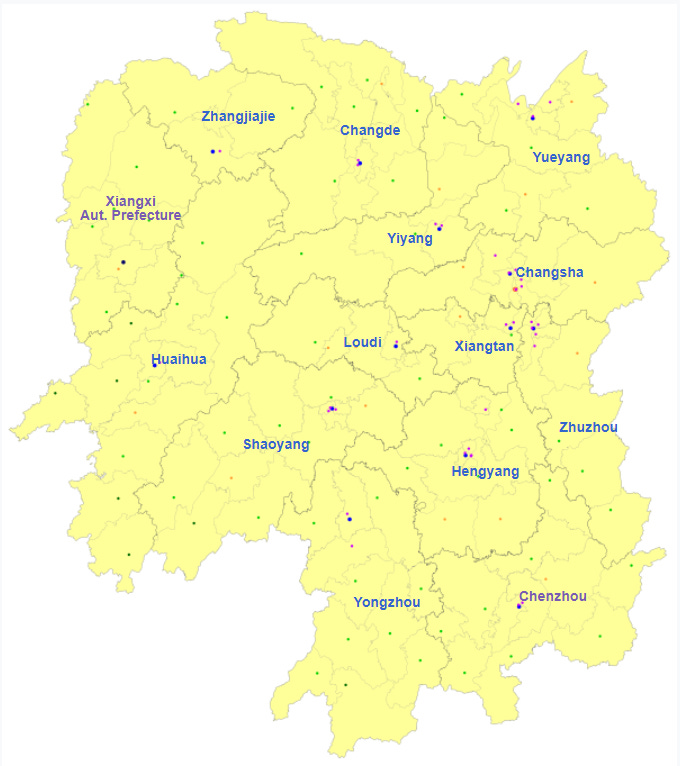
This is the reality behind why a random city that you’ve never heard of will shockingly have a population of 3, or 6, or 9 million people. That’s how many people are in the entire administrative population zone of the prefecture, NOT one continuous urban agglomeration.
In the Hunan example above, both Hengyang and Shaoyang Prefecture-Level Cities have about the same population as the capital, Changsha (all just over 7 million). But no one should be confusing them as cities anywhere near the same size as Changsha. Urban Changsha has almost 6 million people, while urban Hengyang has only 1.2 million people and urban Shaoyang has about 1.4 million. Very different beasts here.
From a practical standpoint, Autonomous Prefectures are very similar to Prefecture-Level Cities, except that they are focused on a specific ethnic minority that has a high concentration in that area. You won’t find any Autonomous Prefectures in the east or south of China; they’re mostly in the regions with a lot of ethnic minorities in the west and southwest. Their biggest distinction from Prefecture-Level Cities is that Autonomous Prefectures aren’t actually themselves cities, just “areas”. Thus, they have a separate capital city.
In most cases, the capital city of an Autonomous Prefecture is named something totally different from the Autonomous Prefecture itself. For instance, the capital of Xiangxi Autonomous Prefecture in Hunan is Jishou City, while the capital of Dehong Autonomous Prefecture in Yunnan is Mangshi City. A notable exception is the popular tourist destination of Dali, in Yunnan Province, as the the capital of the Dali Autonomous Region is also Dali City.
Chapter 3: County-Level
The next administrative level down is the “County-Level,” the constituent components of a prefecture. The common units at the the County-Level are:
Districts 区
County-Level Cities 县级市
Counties 县
And the less-common ones, which will be saved for Part 2:
Autonomous counties
Autonomous banners
Ethnic districts
This neato map from Wikipedia shows every County-Level administrative unit in China:
If we look at an administrative map of single prefecture-level city, we can see the smaller units of which it is comprised: Districts, County-Level cities, and Counties. Recently, Marketplace visited Ganzhou Prefecture-Level City in Jiangxi and their correspondent tweeted about it, saying this:
Notice how the correspondent takes care to emphasize that the population of 9 million *includes surrounding counties*. Why would this be important? Well, it’s because Ganzhou City looks like this:
In Ganzhou, there are just three urban Districts: Nankang, Zhanggong, and Ganxian. This is "downtown urban Ganzhou". These downtown urban districts have a combined population of ~2.5 million. If you’re trying to assess “how populous will Ganzhou look and feel when I walk around there?” this is the best number to give you context. That’s the city part of Ganzhou City.
Below a District is the County-Level City, the next-highest level. You can see two County-Level Cities on the image above: Longnan City and Ruijin City. County-Level Cities may be upgraded to Districts if they reach a certain level of urbanization. Nankang District, for instance, used to be a County-Level City until it was upgraded in 2013. County-Level Cities have their own urbanized cores and Central Business District (CBD).
Below the County-Level City is the County, 县. Everything else in my Ganzhou example above is a County. There are far more Counties than anything else in China, as it is the basic building block of Chinese administration. In fact, “Districts” are a relatively new phenomenon, only going back to the 90s, while “Counties” are often ancient. If a County meets certain requirements for GDP and population, it can upgrade to a County-Level City.
Although Districts, County-level Cities, and Counties are all in the same rough administrative tier, they are not at the same level of seniority. County Governors or County Party Secretaries are the lowest posts in the Party’s cadre development structure…if a County Governor moves to a position in the District government, it’s generally a promotion.
Generally, you don’t want to see a middle-aged County Governor. Good ones would have been promoted quickly, while they were young.
Just like County-Level Cities, Counties have their own built-up areas called xiancheng 县城, or literally the “County-City”. They aren’t just farmlands and villages; they have urbanized segments too - sometimes quite large.
Smaller cities (like Ganzhou) usually have only a few Districts and comprise mostly County-Level Cities and Counties.
On the other hand, more developed cities might not have any Counties at all, like Changzhou in Jiangsu:
Even more developed are very large cities that have ONLY Districts and no “County” things at all, like Wuhan:
But the logic of “larger, more urbanized city = fewer Counties” is only a general rule of thumb, not a strict guideline. Some super-large cities still have plenty of County-Level Cities and Counties too, like Chengdu here:
Chengdu’s total administrative area has around 20 million people, while the core Chengdu urban Districts have 15 million. So yes, it’s massive either way you count it. Just remember when someone tells you Chengdu’s population is 20 million, this also includes the population of places like Dujiangyan City, 70km northwest of downtown Chengdu, or Jianyang City, 70km southeast of downtown.
Speaking of Jianyang, it wasn’t even administered by Chengdu until 2016, when it was “stolen” from Ziyang Prefecture-Level City to the east and given to Chengdu to administer. Supposedly this was done because Jianyang was already a bedroom community for Chengdu commuters. In any event, it boosted Chengdu’s administrative population by 1.5 million overnight. Jianyang is now in the process of being upgraded to a proper District of Chengdu. Actually, before Jianyang was administered by Ziyang, it used to be part of…Chengdu! This kind of administrative reshuffling in China is fairly common, and it results in people having much stronger identity for their local county or city than their governing prefecture.
Chapter 4: Township-Level
Now we’re getting down to the real grassroots…the Township-Level. These are the subdividing units of Districts, County-Level Cities, or Counties.
Here are the three main units of the Township-Level:
Sub-districts - 街道. This is usually used for the most urbanized areas, mostly within districts.
Towns - 镇. This is an administrative unit that is urbanized, but not enough to be a Sub-district.
Townships - 乡. This is a rural administrative unit. They are rare within Districts, and more uncommon than Towns (some cities choose to not use the Township designation, or already converted their Townships to Towns).
Other things like Ethnic Townships and Sums can be saved for Part 2
In the more populous parts of China, you can expect administrative units at this level to have between 30,000-120,000 people, so basically a small-medium American city.
Sub-districts are almost always used for urban areas surrounded by more urban areas. Here in Shanghai, the core downtown Districts like Huangpu District have only Sub-districts. A larger District that stretches into the suburbs like Xuhui District might have just one Town at its periphery. By contrast, a totally suburban District of Shanghai like Jinshan has only one Sub-district (Jinshan’s CBD) and the rest comprises Towns, because Jinshan is quite suburban, more than 70km from downtown Shanghai.
Generally, you can get a quick feel for how urbanized a certain District/County might be without visiting, simply by looking up its Township-Level units and noting whether there are more Sub-districts, Towns, or Townships.
Previously I mentioned how the CBD area of a County is commonly called the 县城, xiancheng, or County-City by the local residents. In reality, the CBD of a such place, the so-called “County-City, is a Town 镇 from an administrative standpoint. Confusing, right?
Chapter 5: Village Level
Finally, we have arrived at the smallest formal administrative unit in China, the Village Level. It’s also pretty easy to explain. Here are the two most common ones:
Residential Community - 社区. This is used for urban communities
Village - 村. This is used for rural communities. Occasionally they are also called 庄, or 寨 zhai if it’s in a mountainous region.
There are also some uncommon Village Level units like Ethnic Village, or things that are essentially the same as a village but have different names in Qinghai or Inner Mongolia, but we can gloss over then for now (see you in Part 2, hey!)
As far as I know, Sub-districts can only be broken down into Residential Communities, while Towns can be broken down into both Residential Communities and Villages, but Townships can only be broken down into Villages.
It’s useful to note the difference between what the Chinese government designates as “natural villages” or 自然村 and “administrative villages” or 行政村. A natural village is one that arose organically in history, ranging from a dozen to hundreds of houses. An administrative village is a governmental unit, often incorporating many natural villages under one governance structure, with a population of thousands.
Even living in downtown Shanghai, you’re not necessarily very far from a village (at least, in the administrative sense). While writing this, I thought it would be fun to try to figure out how far I need to travel out of my home in Shanghai to experience “village life”. It turns out…not very far at all.
I live in Jing’an District, which holds 13 Sub-districts and one Town. That Town is Pengpu Town, and it has 36 Residential Communities…and one Village (Pengpu Village). The closest Village to me, here in downtown Shanghai, turns out to be just 8 kilometers away, in my very same District! Looking at it on Baidu street view, I have no idea why it’s a Village, and not a Residential Community. But there it is. Weird.
Village and residential communities can be organized into “small groups” (小组). This is not a formal administrative structure, but an encouraged hyper-local self-governance structure that also disseminates and organizes village-level governance decisions.
That’s it! This is Part 1 of 2, like I mentioned at the top. The next section will deal with all the oddities, exceptions, and non-conforming weirdness. Stay tuned and please subsribe if you enjoyed.



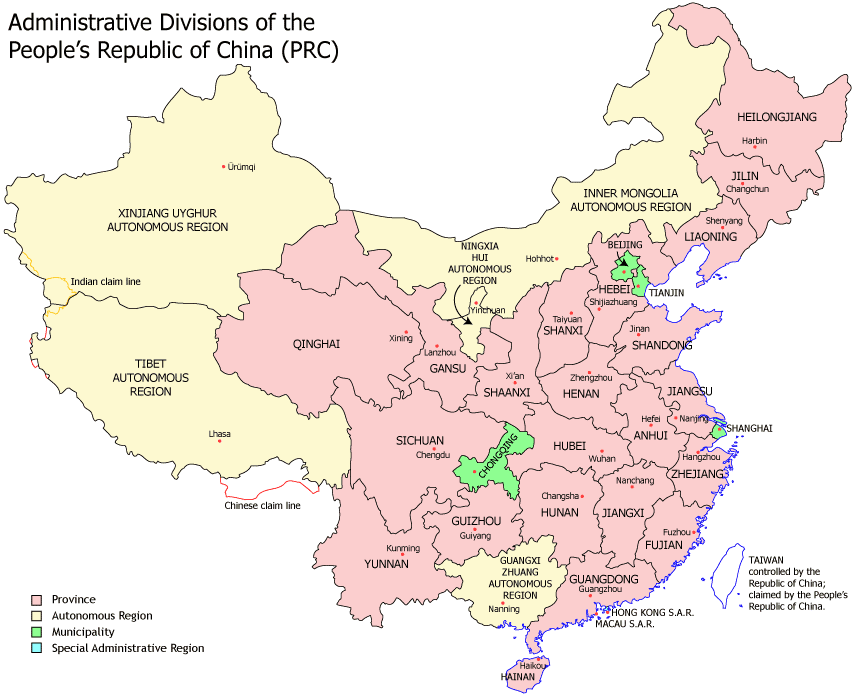
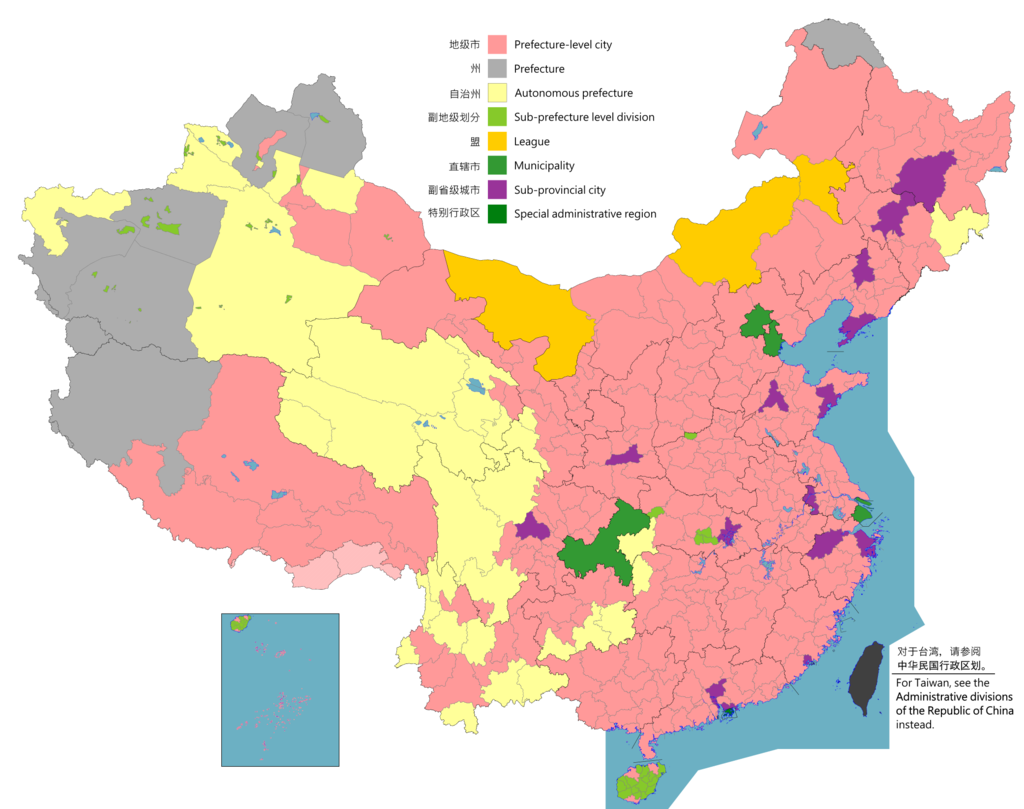
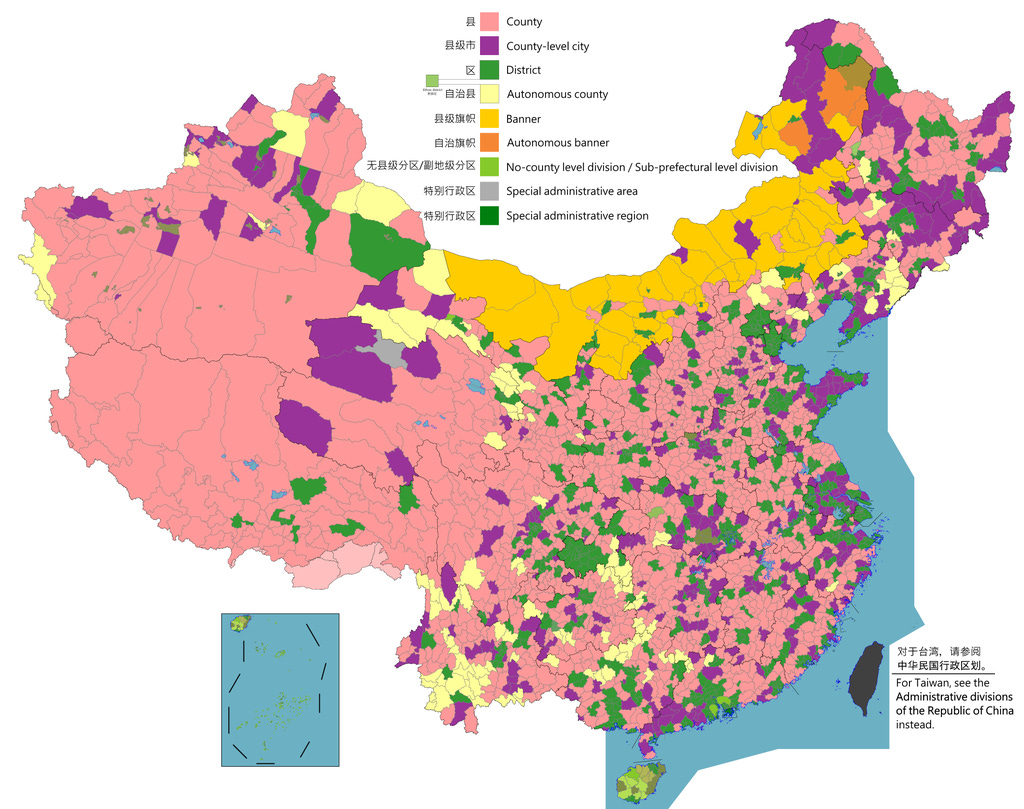
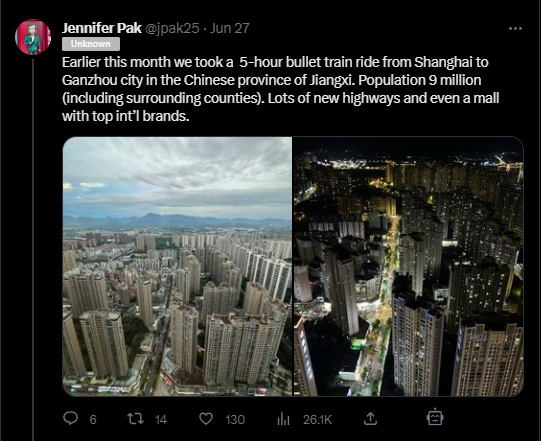
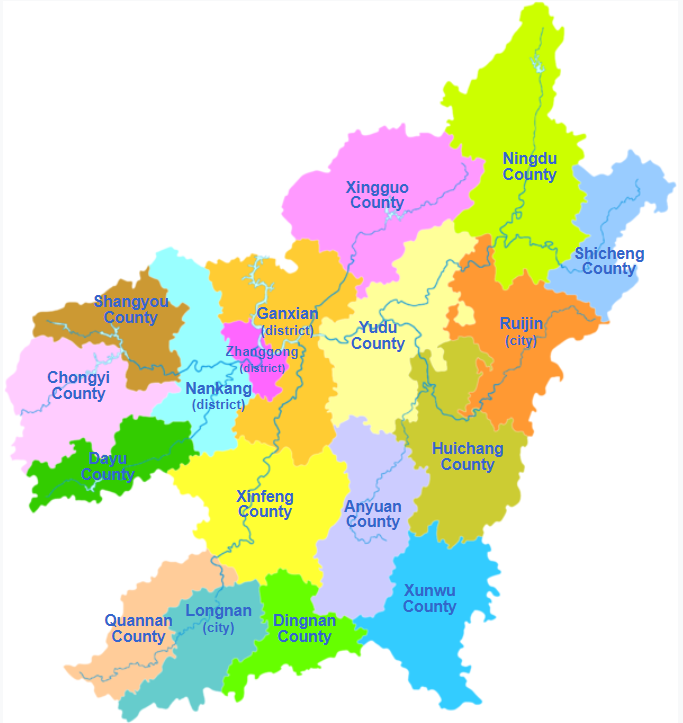
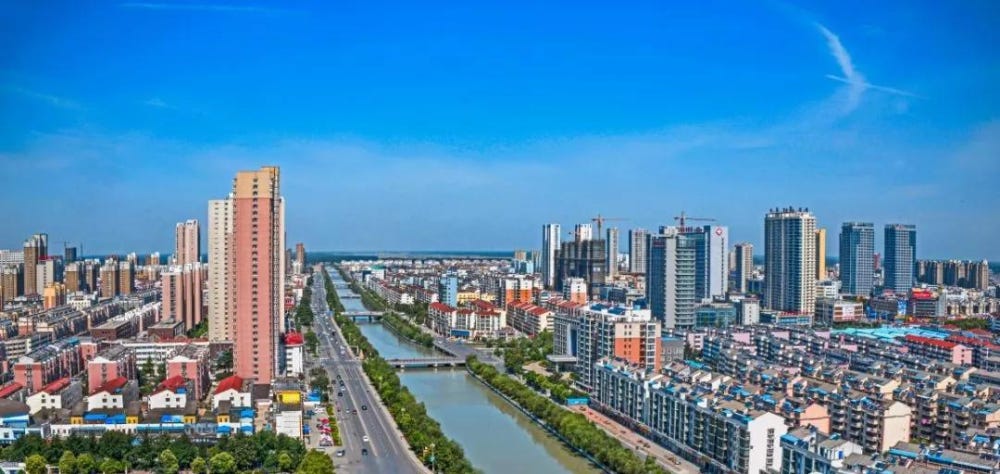
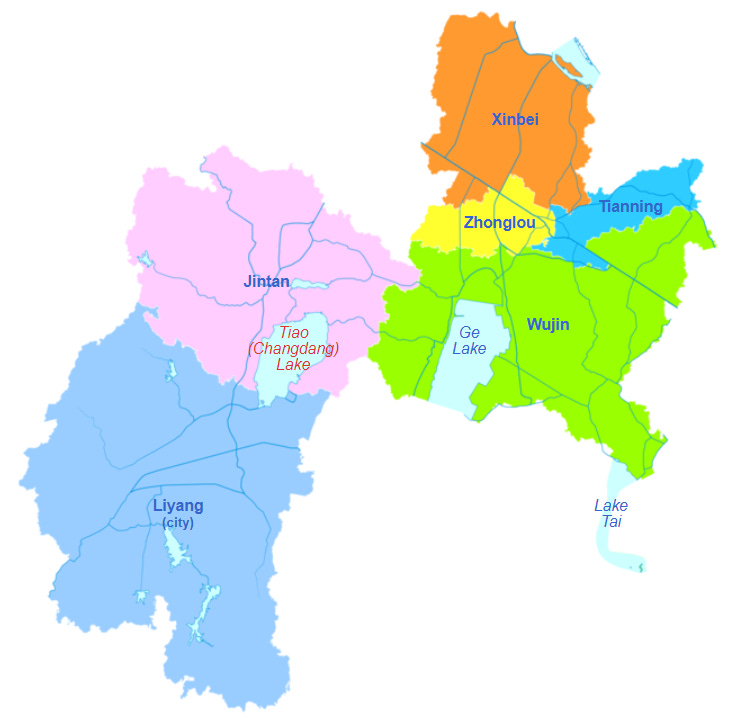
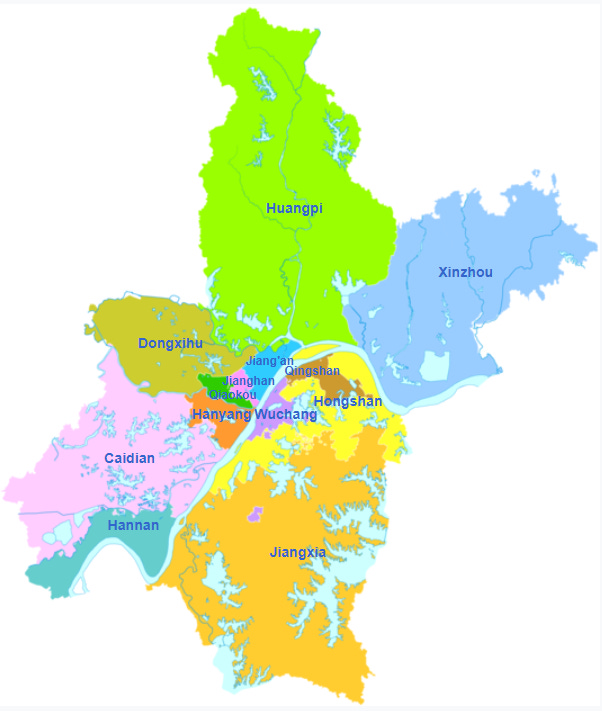
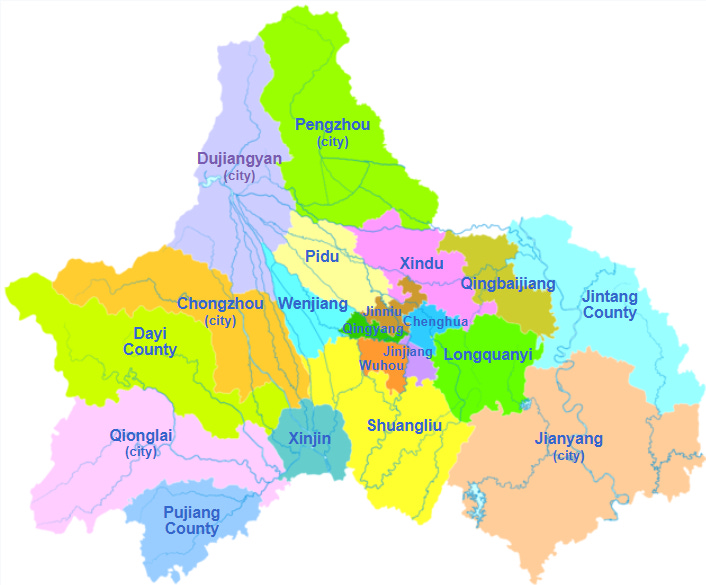
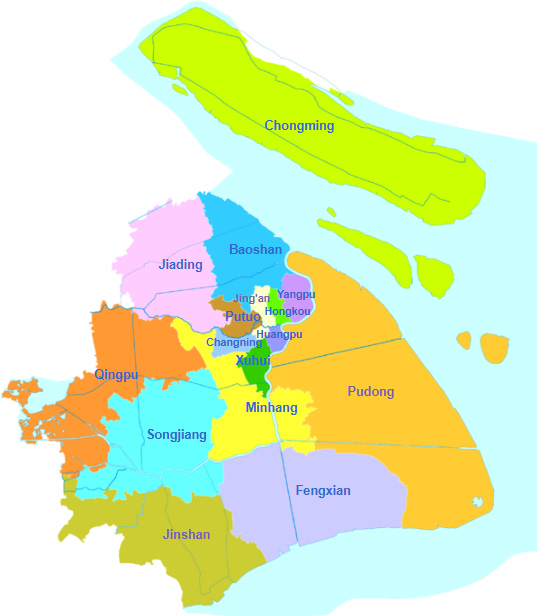
You lost me somewhere in the County-level section... lol! But since you put a map of Chengdu, what I can say is that Dujiangyan, for example, is mostly rural, except for a small "city" part in the west. It's always interesting to see all the rivers that spread all over the Chengdu plain, that all originate from the Dujiangyan irrigation system, built 2300 years ago, and that has made Chengdu such a prosperous area for millennia, like a peaceful paradise far away from the hustle of the east coast. One thing I like about the city is that, even though there have been troubled times when the city was pretty much emptied, you still "feel" those 2000 years of mostly peaceful history.
Another small point about Chongqing: it used to be part of Sichuan, and was separated administratively when they built the 3 gorges project. It's still pretty much Sichuan, though culturally, as a "port" city, very different from Chengdu.
A very small bone to pick:
For this sentence【Autonomous Prefectures are very similar to Prefecture-Level Cities, except that they are focused on a specific ethnic minority that has a high concentration in that area.】there are actually 10 Autonomous Prefectures simultaneously dedicated to two ethnic groups, list can be found here https://zh.wikipedia.org/wiki/%E8%87%AA%E6%B2%BB%E5%B7%9E. There are no Autonomous Prefectures for three or more ethnic groups.
Also for the super nerdy (might be more suitable for Part II?), ever wondered why the five Autonomous regions are named slightly different? The standard composition should be [region]+[ethnic group]+[autonomous region], i.e. 宁夏回族自治区 (Ningxia Hui ethnic group autonomous region)and 广西壮族自治区 (Guangxi Zhuang ethnic group autonomous region). BUT Xizang (Tibet) and Neimenggu (Inner Mongolia) are just 西藏自治区 (Xizang autonomous region) and 内蒙古自治区(Inner Mongolia autonomous region), that's because the name of the ethic group (藏,蒙) is already embedded in the regional names, so they dropped the ethnic part altogether. 新疆维吾尔自治区 (Xinjiang Uyghur autonomous region)left out the word 族 or ethnic group because 族 is usually left out in autonomous regions of ethnic groups with 3 or more characters in their names. the same for 柯尔克孜,哈萨克 etc.